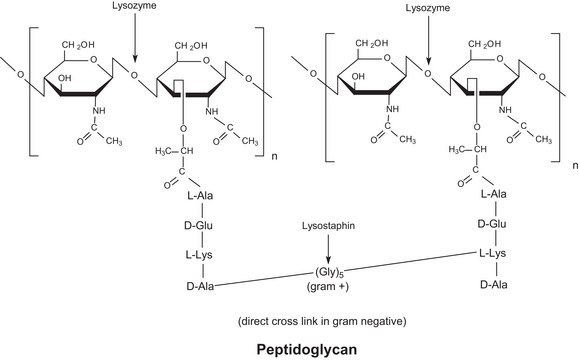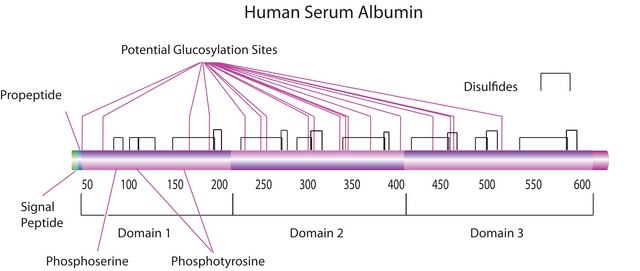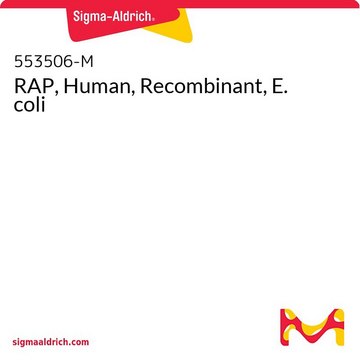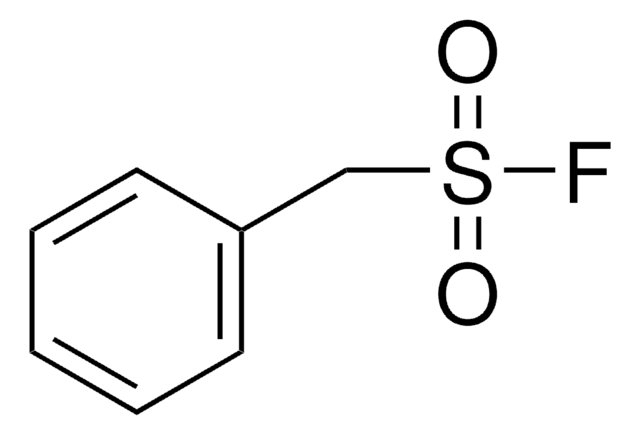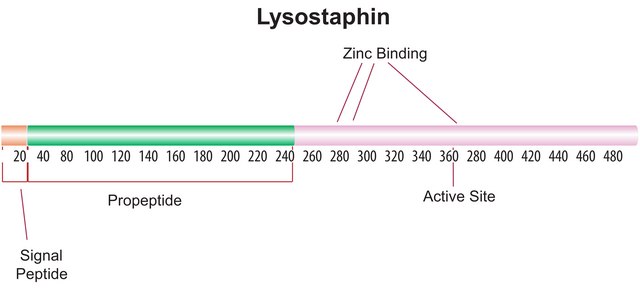M6159
α2-Macroglobulin from human plasma
BioUltra, ≥98% (SDS-PAGE)
Synonym(s):
α2-M
Sign Into View Organizational & Contract Pricing
All Photos(2)
About This Item
Recommended Products
biological source
human plasma
Quality Level
product line
BioUltra
Assay
≥98% (SDS-PAGE)
form
lyophilized powder
mol wt
~720 kDa (four glycoprotein subunits)
composition
Protein, 15-30% biuret
technique(s)
inhibition assay: suitable
solubility
water: soluble 10 mg protein/mL, clear, colorless
UniProt accession no.
storage temp.
−20°C
Gene Information
human ... A2M(2)
Looking for similar products? Visit Product Comparison Guide
Related Categories
Application
α2-Macroglobulin was used to study impaired lipoprotein receptor-mediated peripheral binding of plasma amyloid-β which is an early biomarker for mild cognitive impairment preceding Alzheimer′s disease. It was also used in the control of the classical and the MBL pathway of complement activation.
Inhibits all classes of endoproteases by forming a complex with the protease. When the protease cleaves the macroglobulin "bait" sequence, the macroglobulin rearranges and traps the protease.
Biochem/physiol Actions
α2-Macroglobulin (α2M) is a multifunctional protein that is a broad spectrum protease inhibitor. α2M is a large homotetrameric glycoprotein (720 kDa) that is connected by disulfide-linked dimers which non-covalently interact to give the quaternary structure. α2M is found in normal plasma at a concentration of 220-230 mg/dl accounting for 3-5% of the total plasma protein.
α2-Macroglobulin is found abundantly in plasma and interstitial fluids. The protease-α2-M balance plays an important role in mediating inflammatory tissue destruction. Serum levels of α2-M and protease-α2-M complexes are increased in patients with sepsis, emphysema, periodontitis, rheumatoid arthritis, and other inflammatory diseases, and oxidant inactivation of α2-M may contribute to tissue destruction during inflammation.
Serum levels of α2-Macroglobulin (α2-M) and protease-α2-M complexes are increased in patients with sepsis, emphysema, periodontitis, rheumatoid arthritis and other inflammatory diseases. It is hypothesized that the oxidant inactivation of α2-M contributes to tissue destruction in inflammation.
Packaging
Package size based on protein content
Physical form
Lyophilized from 0.02 M Tris, 0.13 M glycine, pH 8.0, and 0.08 M trehalose
Analysis Note
Plasma from each donor has been tested and found negative for antibody to HIV-1/HIV-2, antibody to HCV and HbSAg.
Storage Class Code
11 - Combustible Solids
WGK
WGK 3
Flash Point(F)
Not applicable
Flash Point(C)
Not applicable
Choose from one of the most recent versions:
Already Own This Product?
Find documentation for the products that you have recently purchased in the Document Library.
Customers Also Viewed
Our team of scientists has experience in all areas of research including Life Science, Material Science, Chemical Synthesis, Chromatography, Analytical and many others.
Contact Technical Service
